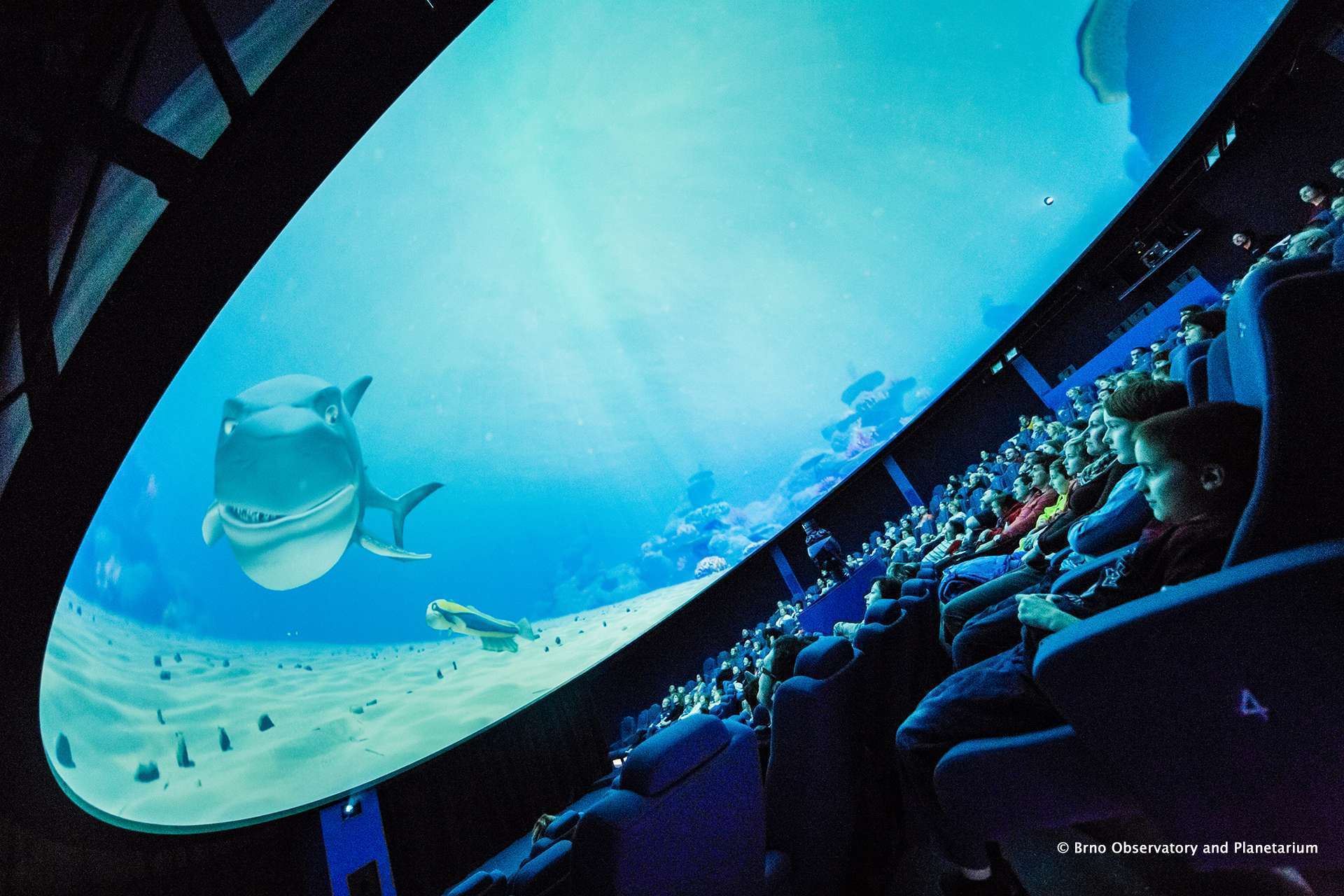An Astronomical and Scientific Educational Tool
Interactive and immersive technology is playing an important part in delivering education and training across a range of disciplines and different institutions, and digital planetariums are a part of this.
Our partner RSA Cosmos designs innovative and practical planetarium technologies that are broadening the accessibility and capabilities of the planetarium as an educational tool in the fields of astronomy and science.
The History of Astronomical Education in Planetariums
It was important for the US space program that its astronauts understood what they'd experience in space, and could prepare themselves for celestial navigation. Consequently, using the planetarium became an essential part of their training. The navigational procedures they learned in that setting would become essential to the actual navigation of spacecraft.
Early spacecraft had imperfect navigational systems, so it was down to the planetarium to fill in the gaps in the crews' knowledge.
Educators at the planetarium devised a general navigation training program for astronauts, teaching them 42 guide stars that would assist with their path finding in outer space. What the planetarium could do was give them a realistic, panoramic view of the bigger picture, including stars and constellations. For example, astronauts on different NASA space missions, including Apollo, Skylab and Mercury, trained at Carolina's Morehead Planetarium.
In these early days, interactive technology was not available, so the planetarium staff recreated the movement and restricted view of the spacecraft using an old canopy placed inside fighter pilot training equipment.
Digital Planetariums Bring Further Educational Opportunities
Where once the planetarium mainly focused on digital spectacle, supported with surroundings designed to enhance mood and drama, it now offers a fully interactive experience. The modern digital planetarium represents a further leap forward in technology, using advanced 3D modelling, cutting-edge rendering of terrains, animation and other immersive elements. Together, these have transformed the whole planetarium concept from something primarily observational into a full sensory experience. Advanced and dedicated planetarium software, such as SkyExplorer from RSA Cosmos, is helping to make planetariums the immersive classrooms of the future.
An Astronomy Classroom and Public Science Theatre
Science is an important part of education and can play a key role in the curriculum. Embedding an interest in science and astronomy in people at a young age can help set them up with an interest in science for life. More young people are now taking STEM (science, technology, engineering and maths) subjects at university.
The teaching of science in schools has broadened considerably, and in fact, one GCSE astronomy qualification is the fastest growing science GCSE in the UK.
There is a near-universal enthusiasm in schools for astronomy as a science subject. The National Curriculum includes astronomy-related areas such as understanding the Earth’s rotation, the effect of the Earth’s tilt on the seasons, gravity forces and the solar system.
New modes of delivering scientific education, using immersive and interactive technology, are increasingly influential. Planetariums are tools to provide this type of experience-based learning, offering vivid journeys into the universe, while providing a rich source of supporting educational material.
Planetarium Education for Everyone
SkyExplorer software offers much more up to date methods of harnessing the power of the planetarium for education. It integrates leading technologies to provide scientifically accurate data. SkyExplorer Live Atlas is a major fully-integrated development, connecting SkyExplorer directly to the latest updates and datasets from scientific research institutions. Meanwhile, SkyExplorer Cloud Community brings together a worldwide network of users able to share content, offering a wider access to simulation-based visualizations.
The availability of 3D models such as the Perseverance Rover and Mars Helicopter enable users to reproduce and explain the Mars 2020 mission.
RSA Cosmos has collaborated with Saint-Etienne Planetarium and Ball State University to deliver educational programs.
This modular approach includes live and interactive presentations, adaptable to different user groups with varying abilities and who learn at different rates.
Education through Entertainment
Planetarium displays create more than spectacles. These are vivid educational experiences for the audience.
SkyExplorer's Audience Response System uses advanced technology that gives users individual armrest control so that they can personally interact with the planetarium display. They can ask questions, select scenarios and have direct control over camera movements.
This system is designed to be fully inclusive, and there is also a wheelchair-friendly version.
Learn more about SkyExplorer and RSA Cosmos’s digital planetarium solutions
ST Engineering Antycip is a supplier of RSA Cosmos’s high-quality turnkey solutions and powerful astronomical software, SkyExplorer.
This includes flexible and adaptable immersive displays for a range of settings and different uses, including all dome sizes and every level of technology: 2D and 3D for 2K to 10K+ installations, hybrid solutions, and LED dome display technology.
For more information, contact us.




















